As posted on FosterEDU
American education evolved into its current system by adapting to advancements in technology and changes in the labor market. Penn Foster’s history is rooted in response to and growth from these very same changes. Our career-oriented courses not only provide vital training to American workers looking to advance their careers and quality of life, but they reflect the education and training needs of the American employment market and help employers fill important jobs with skilled workers. Penn Foster’s offerings reflect America’s education and employment trends over the last 125 years and highlight the vital role we continue to play in equipping today’s students to become tomorrow’s workforce.
Pioneers of Distance Learning
Following the Civil War, the U.S. workforce expanded as it grew into the world’s largest manufacturer. Railroads fueled the iron and steel industries and the demand for iron and coal miners, while electricity spurred copper mining. Meanwhile, industrialization depended on factory workers, and the need to feed the growing workforce required more farm workers. Millions of immigrants filled out this growing labor force.
These changes also catalyzed educational transformations. Horace Mann had already popularized the Prussian model of universal educational standards, and German immigrants had imported kindergarten. These developments encouraged new thinking about education from progressive educational proponents such as John Dewey.
In this innovative atmosphere, the seeds of distance learning took root. The late 19th century spawned the Chautauqua movement, which used camps, circuit lecturers and correspondence courses to deliver education to rural areas.
Independently, in 1890, Pennsylvania newspaper publisher Thomas J. Foster began using his paper to train miners who needed to learn engineering principles for mine safely. Foster faced barriers, such as the fact that the miners had full-time jobs and many lacked prior education, so he had to innovate. A question-and-answer column grew so popular that it expanded into a separate correspondence course. The educational principles Foster developed proved effective for teaching non-engineering classes and inspired the International Correspondence Schools (ICS). ICS added a Students’ Aid Department to assist students seeking work and performed services, such as resume writing and job placement.
Post-war Educational Challenges and the Digital Education Revolution
The changes wrought in the 20th century by World War I, World War II and the Cold War made science and technology education imperative. New industries grew up around developments such as televisions, transistors, electronics, computers, aviation, and space exploration, requiring workers with new skill sets. The perceived “Missile Gap” between the U.S. and Soviet Union further spurred the need for science and technology skills.
As America rushed to the moon, technology surged ahead and inspired educational innovations. Correspondence courses adapted to new technologies, offering courses in high-demand areas such as electronics, television, radio, electrical engineering and air conditioning. Public-access TV began airing classes for vocational college students. Computers and the Internet entered education, and correspondence and vocational students sought skills such as computer repair and programming. Economic ups and downs forced many students to study around busy work schedules. ICS responded to Americans’ need for greater flexibility with course scheduling to earn a post-high school degree by becoming an online distance learning provider in 2003, before becoming known as Penn Foster in 2006.
Meeting Today’s Educational Needs
The mobile revolution has renewed the postwar mandate for science and technology training. Employers seek workers with on-the-job adaptability to new technologies. Fifty-four percent of all jobs now require middle skills in areas such as computer technology, nursing, and high-skill manufacturing, according to the most recent Bureau of Labor Statistics data.1 Moreover, many of these new jobs are mobile, with Tech Pro Research reporting that 74 percent of organizations have now adopted BYOD policies.2
Innovations such as massive open online courses and career colleges have emerged to meet the needs of today’s mobile workforce and fill the middle skills gap. Recognizing the value of these new educational tools, employers such as Starbucks are now paying for employees to take online courses.3
True to its tradition, Penn Foster is still leading the way in these new developments. Where ICS once helped miners learn concepts critical for their safety, Penn Foster is now helping busy students, such as single mothers and adults with full-time jobs, acquire new skills. As technology continues to reshape the economy, education and Penn Foster will continue to adapt.
Resources: (1) United States’ Forgotten Middle (2) Research: 74 Percent Using or Adpoting BYOD (3) Starbucks Will Pay Tuition for Workers to Take Online College Program
